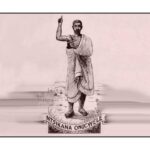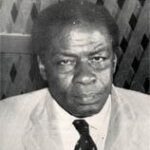OKAI KOI
- 3 Min Read
Okai Koi (circa 1610-June 20, 1660), the sixth king of Accra (ruled 1643-1660) was a prominent figure in coastal trade and politics in the 17th century. He granted permission to build forts on the coast to the English, the Danes, the Swedes, and the Dutch.
He succeeded his mother, Dodi Akaibi, after some years of internal strife, during which time a regent named Cussy acted for the child king. W. Bosman, in his work A New and Accurate Description of the Coast of Guinea (1705), states that this was a period of anarchy, and this is evident from the fact that Okai Koi was able to maintain full control only over the area surrounding his capital, Ayawaso, 8 mi (13 km) inland from Accra. Accra was then divided into “Great Accra”, and “Little Accra”, and Okai Koi ruled over the former, though there is evidence that he must also have exerted some influence over Little Accra.
During Okai Koi’s reign, Accra was the focal point for European trade with the Gold Coast. The Portuguese at first held a monopoly, but the Dutch, the English, the Danes, and the Swedes were permitted to build forts by Okai Koi. The Swedes built a fort at Osu, from which they were driven by the Danes in 1657. In 1659 the Danes renamed the fort Christiansborg, and enlarged it, with Okai Koi’s permission.
Although trade flourished under him, and various commercial centres sprang up in the area, prosperity was shortlived because of the ambitions of the Akwamus, whose capital of Nyanwase was situated some 20 mi (32 km) northwest of Accra. The Accras, who lacked economic resources, depended on the Akwamus for trade from the interior, and the Akwamus tried to keep all the advantages for themselves by levying tolls on the traders. To check this practise Okai Koi encouraged attacks on the Akwamus, who eventually blockaded Accra in 1646.
Actual hostilities, however, did not begin until 1660, when internal dissension had weakened the states. The Akwamu leader, Ansa Sasraku I, took the opportunity offered by this dissension to attack Accra. The pretext given was that the heir to the Akwamu stool, Akotia, had been circumcised by the Accras, thus disqualifying him from the succession, and for this action, they must now pay the penalty. In reality, however, it was Ansa’s political ambition for expansion which led to the war. Ayawaso was attacked, Okai Koi was deserted by his allies, and his generals displayed treachery.
At the battle of Nyantrobi, in 1660, 12 mi (19 km) north of Accra, Okai Koi’s forces were defeated, and his capital was sacked. He is said to have committed suicide by shooting himself while seated upon his throne. In character, Okai Koi was said to have been headstrong and violent. Under his rule, the Ga people consolidated their power under the leadership of the Accras. But Okai Koi’s leadership was based on force, rather than respect, and when the unity of the Ga towns was tested by the Akwamu challenge, it dissolved.
R. I. A. KOTEI




